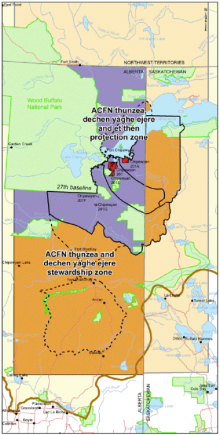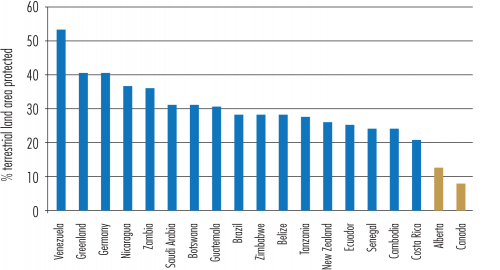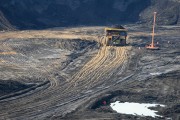Last week, without much fanfare, Athabasca Chipewyan First Nation (ACFN) — a small First Nation based in Fort Chipewyan located downstream from the oilsands — released a report entitled Níh boghodi: We are the stewards of our land. It is an impressive land-use planning proposal for co-management of a vast area of northeastern Alberta that outlines a balanced approach to support conservation of woodland caribou and wood bison while still supporting responsible industrial development on ACFN’s traditional territories.
The plan identifies both a protection zone where industrial development  would be prohibited, and a stewardship zone that includes management recommendations such as: maximum levels of disturbance, compensatory restoration at a rate greater than development, prevention of water withdrawals from important water bodies as well as a comprehensive implementation and monitoring plan.
would be prohibited, and a stewardship zone that includes management recommendations such as: maximum levels of disturbance, compensatory restoration at a rate greater than development, prevention of water withdrawals from important water bodies as well as a comprehensive implementation and monitoring plan.
At a time when caribou are in steep decline in Alberta, and the federal Government continues to miss deadline after deadline for delivery of a recovery strategy, it is encouraging to see a First Nation step into the breach with a comprehensive and well-articulated proposal that includes recognition of the need to protect habitat in Alberta if caribou are to survive.
The recommendations the report contains are consistent with the improvements to land management outlined in our report, Solving the Puzzle: Environmental responsibility in oilsands development. Solving the Puzzle shows how Alberta is lagging behind many other jurisdictions in the establishment of conservation areas to protect biodiversity and recommends that Alberta protect 50 per cent of its boreal forest while co-managing these areas with aboriginal peoples.
While establishment of protected areas is often seen as at odds with industrial development, a substantial increase in protected areas is economically viable. Research from the University of Alberta, sponsored by the Alberta Government’s Land Use Secretariat, has shown that Alberta could permanently protect 40 per cent of its public forests from industrial activity at a cost of only three to seven percent of the net present value of natural resource development in the province.
In other words, should it choose to, Alberta could develop up to 97 per cent of the value of its natural resources while, at the same time, receive praise as a world leader in conservation and aboriginal co-management. Given the criticism Alberta has received internationally for its management of oilsands development, one wonders what it’s waiting for?
That said, Alberta has developed a draft plan for the Lower Athabasca Region (LARP) that could make some progress in addressing this gap in conservation. Completing that landuse plan has been identified as a priority for the new Redford government in mandate letters to cabinet this year, making us hopeful that we could soon see a strengthened plan for the Lower Athabasca.
ACFN’s proposal is a welcome contribution to the growing debate about the need for enhanced planning, conservation and co-management of natural resources in Alberta and may act as a model for other First Nations to outline their vision for conservation and management of cumulative effects in northern Alberta.










